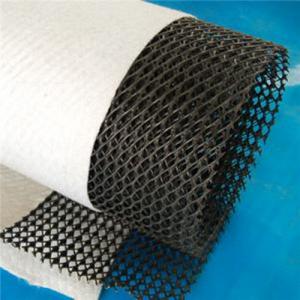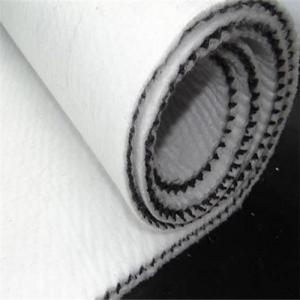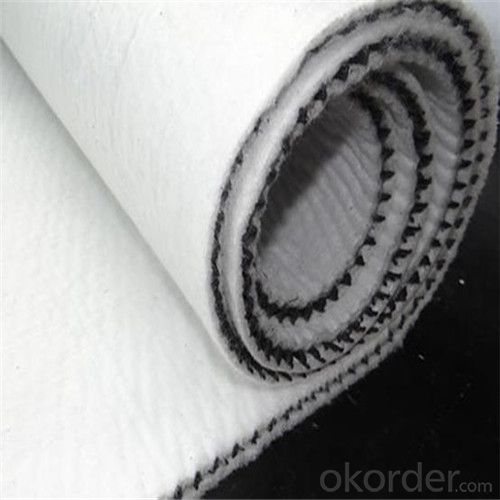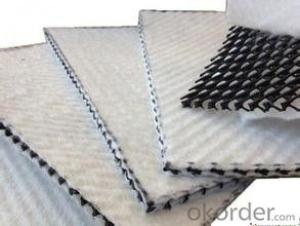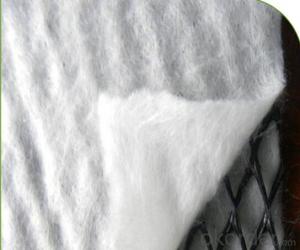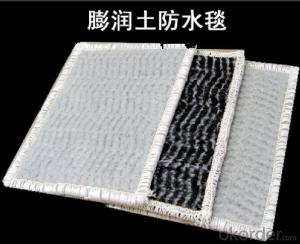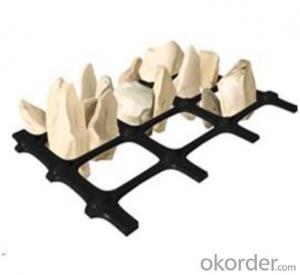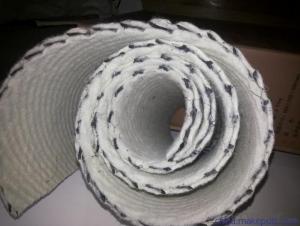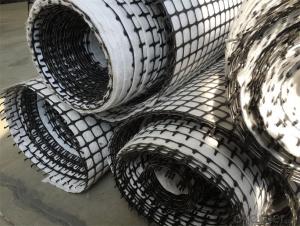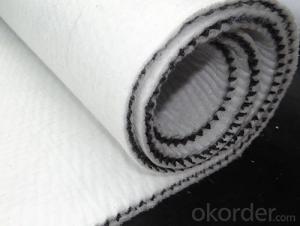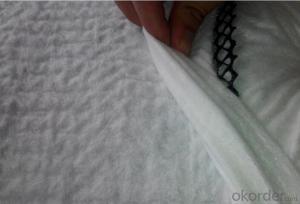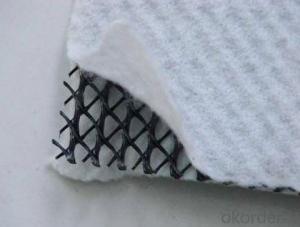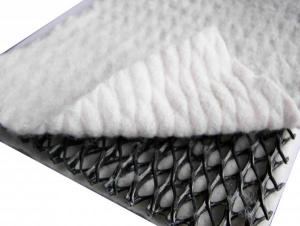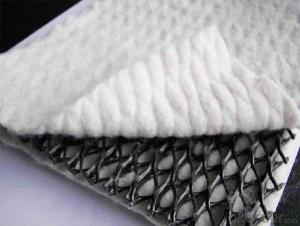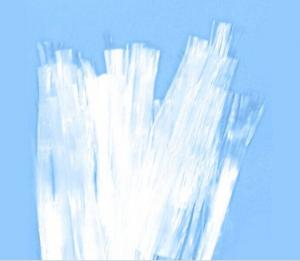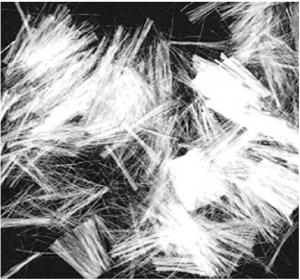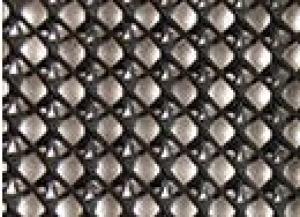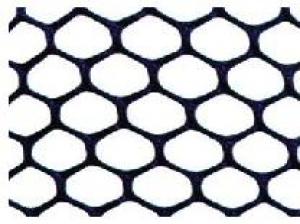Three-Dimensional Composite Drainage by Geonet and Geotextile
- Loading Port:
- Qingdao
- Payment Terms:
- TT or LC
- Min Order Qty:
- 1000 m²
- Supply Capability:
- 10000 m²/month
OKorder Service Pledge
OKorder Financial Service
You Might Also Like
Composite Geonet Description:
Composite geonet is a new type drainage material. It has three layers: three-dimensional geonet and nonwoven geotextile on both sides.
The material of geonet is HDPE, and the material of geotextile can be needle punched PET/PP nonwoven geotextile, and thermalbonded continuous filament nonwoven geotextile.
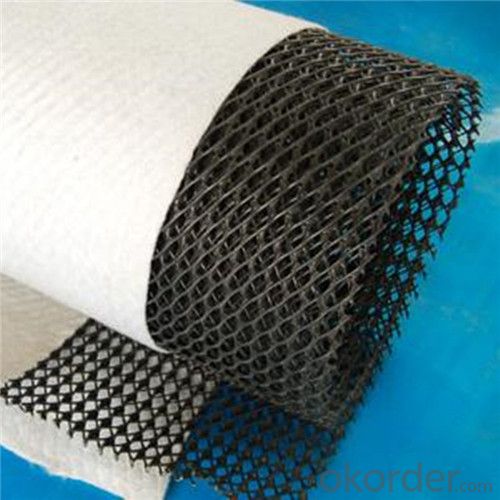
Composite Geonet Specification:
Thickness of geonet: 5mm to 8mm
Weight of geotextile: 200g/m2, as request
Width: 2m-4m
Length: as request
Composite Geonet Property:
Tri-dimension composite geonet has the property of geotextile (filtration function) and geonet (drainage and protection function), it can provide a function system: filtration-drainage-protection. The core of net with its unique tri-dimension structure can bear high
compression load in construction and remain certain thickness, provide good water conductivity.
Composite Geonet Application:
Landfill drainage, roadbed and road drainage, railway drainage, tunnel drainage, underground structure drainage, the retaining back wall
drainage, gardens and sports grounds drainage.
Packaing
Our packing is strong enough to withstand bumping and rough handling under normal condition.
We can accept add customer's logo on the package.
Our Service
1. OEM Manufacturing welcome.
2. Free Sample to see our quality.
3. We will reply you for your inquiry in 24 hours.
4. After sending, we will track the products for you once every two days, until you get the products. When you got the goods, test them, and give me a feedback.If you have any questions about the problem, contact with us, we will offer the solve way for you.
- Q: What are the different types of geotextile fabric installation methods?
- There are several types of geotextile fabric installation methods, including trenching, overlaying, and wrapping. Trenching involves digging a trench and placing the fabric at the desired depth before backfilling. Overlaying involves placing the fabric over a prepared surface and then covering it with another layer of material. Wrapping involves encasing a structure or object with the fabric to provide protection and stability. These installation methods are used to enhance soil stabilization, erosion control, and drainage in various civil engineering and construction projects.
- Q: Are earthwork products compatible with other construction materials?
- Yes, earthwork products are generally compatible with other construction materials. Earthwork products, such as soil, gravel, or fill material, can be used in combination with various construction materials like concrete, asphalt, or steel to enhance their performance and stability. For instance, soil can be used as a base or backfill material for foundations, while gravel can be used as a sub-base for roads or pavements. However, compatibility may vary depending on specific project requirements and engineering considerations.
- Q: How are geogrids used in pavement construction?
- Geogrids are used in pavement construction to enhance the stability and strength of the pavement. They are typically placed between layers of soil or aggregate, acting as a reinforcement to distribute the load and prevent the movement of materials. This helps to reduce cracking, rutting, and other pavement distresses, resulting in a longer-lasting and more durable road or pavement structure.
- Q: How do geosynthetic meshes help in soil reinforcement for roadways?
- Geosynthetic meshes provide soil reinforcement for roadways by improving the stability and strength of the soil. These meshes are designed to distribute and transfer the load from the traffic evenly, reducing the stress on the soil and preventing its deformation or settlement. Additionally, geosynthetic meshes help in controlling soil erosion, enhancing drainage, and improving the overall performance and lifespan of the road.
- Q: Can earthwork products be recycled or reused?
- Yes, earthwork products can be recycled or reused. Many construction materials such as concrete, asphalt, and soil can be recycled and used for other projects. Additionally, earthwork products like crushed stone or gravel can be reused in various applications such as road construction or landscaping. Recycling or reusing earthwork products helps reduce waste and promotes sustainability in the construction industry.
- Q: Are earthwork products suitable for constructing waterfalls and cascades?
- Yes, earthwork products can be suitable for constructing waterfalls and cascades. Earthwork products, such as rocks, boulders, and soil, can be manipulated and arranged to create natural-looking water features. These materials can be used to build the foundation and structure of the waterfall or cascade, providing stability and aesthetic appeal. Additionally, earthwork products can be combined with other elements like water pumps and landscaping to enhance the overall design and functionality of the water feature.
- Q: How are geosynthetic materials used in coastal protection structures?
- Geosynthetic materials are commonly used in coastal protection structures for various purposes. They are employed to stabilize shorelines, control erosion, and provide structural support to prevent coastal land loss. Geotextiles, for instance, are often used as an underlay for coastal revetments or seawalls, enhancing their stability and preventing soil erosion. Additionally, geotubes, which are large geosynthetic containers filled with sand, can be deployed as breakwaters or dune reinforcements, effectively absorbing wave energy and protecting vulnerable coastal areas. Overall, geosynthetic materials play a crucial role in coastal protection by providing cost-effective and sustainable solutions for shoreline stabilization and erosion control.
- Q: Civil Engineering and Materials Science and Engineering Which professional work later? The The Is there a working environment? The
- Civil engineering can go to the construction unit, the supervision unit, the cost of consulting units, design units, real estate companies, etc.
- Q: How do geosynthetic liners contribute to groundwater recharge in water storage facilities?
- Geosynthetic liners help to prevent water from leaking out of water storage facilities, ensuring that more water is retained. This retained water can then slowly seep into the ground, replenishing groundwater sources and contributing to groundwater recharge.
- Q: What are the load-bearing capacities of earthwork products?
- The load-bearing capacities of earthwork products can vary depending on factors such as the type of material used, compaction levels, and the specific application. It is essential to consult engineering or manufacturer specifications to determine the load-bearing capacities of specific earthwork products for accurate and safe usage.
Send your message to us
Three-Dimensional Composite Drainage by Geonet and Geotextile
- Loading Port:
- Qingdao
- Payment Terms:
- TT or LC
- Min Order Qty:
- 1000 m²
- Supply Capability:
- 10000 m²/month
OKorder Service Pledge
OKorder Financial Service
Similar products
Hot products
Hot Searches
